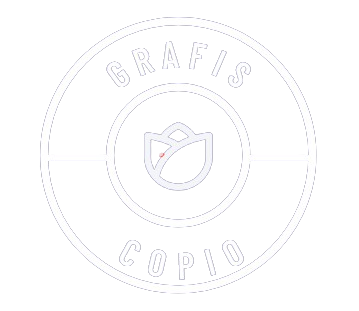Managing a freelance graphic design business can be a challenging endeavor. You have to navigate the ups and downs of finding and securing clients, pricing and negotiating contracts, and balancing multiple projects and deadlines. On top of that, you must also handle the financial and administrative aspects of your business. And let’s not forget about managing client expectations and feedback. In this article, we will explore just how hard it is to juggle all these responsibilities and provide strategies for success.
Finding and Securing Clients
When managing a freelance graphic design business, it can be challenging to find and secure clients. Client acquisition is a crucial aspect of running a successful business, and implementing effective marketing strategies is key to attracting potential clients. To start, it is essential to identify your target audience and understand their needs and preferences. This will enable you to tailor your marketing efforts to reach the right people. Utilizing online platforms such as social media, professional networking sites, and design-specific marketplaces can significantly expand your reach and visibility. Creating a compelling online portfolio that showcases your skills and previous work is crucial in building credibility and attracting potential clients. Additionally, actively networking with other professionals in the industry, attending design conferences, and participating in online communities can help you establish valuable connections and referrals. Offering incentives, such as discounts for first-time clients or referral bonuses, can also encourage word-of-mouth marketing. Regularly evaluating and adjusting your marketing strategies based on their effectiveness is vital to ensure you are targeting the right audience and maximizing your client acquisition efforts. By employing these strategic marketing techniques, you can increase your chances of finding and securing clients for your freelance graphic design business.
Pricing and Negotiating Contracts
To effectively manage your freelance graphic design business, it is essential to establish competitive pricing and negotiate contracts with clients. Pricing your services appropriately can be challenging, but it is crucial to strike a balance between your skills, experience, and market rates. Here are some tips to help you navigate the pricing and negotiation process:
- Conduct market research: Research the current rates in your industry to ensure your pricing is competitive. Consider factors such as your skill level, experience, and the value you bring to the table.
- Communicate with your clients: Effective client communication is key to successful pricing and negotiation. Clearly discuss the project scope, deliverables, and timelines to ensure both parties are on the same page.
- Define project scope: Before negotiating a contract, make sure to clearly define the scope of the project. This includes outlining the specific tasks, revisions, and any additional services that may incur extra charges.
- Be flexible, but firm: Negotiation is a give-and-take process. Be open to compromise, but also stand firm on your value and the time and effort required for the project.
- Put it in writing: Once you have reached an agreement, it is crucial to document the terms and conditions in a contract. This protects both parties and ensures clarity throughout the project.
Balancing Multiple Projects and Deadlines
Now that you have established competitive pricing and negotiated contracts with your clients, it’s time to tackle the challenge of balancing multiple projects and deadlines in your freelance graphic design business. Effective time management is crucial in ensuring that you meet your clients’ expectations while maintaining your sanity. To achieve this, it is important to prioritize your tasks and create a schedule that allows you to allocate sufficient time for each project. Start by assessing the deadlines for all your ongoing projects and identify the ones that require immediate attention. Break down each project into smaller tasks and allocate specific time slots for each. By organizing your workload in this way, you can ensure that you are making progress on all projects and meeting your deadlines. Additionally, it is important to practice stress management techniques to avoid feeling overwhelmed. Take regular breaks, practice deep breathing exercises, and engage in activities that help you relax and recharge. Remember, maintaining a healthy work-life balance is essential for long-term success in your freelance graphic design business.
Managing Finances and Administrative Tasks
Managing the finances and administrative tasks of your freelance graphic design business can be challenging, but with proper organization and attention to detail, you can ensure the financial health and smooth operation of your business. Financial planning and record keeping are essential components of managing your business effectively. Here are some strategies to help you stay on top of your finances and administrative tasks:
- Financial Planning
- Create a budget: Determine your monthly expenses and set aside funds for taxes, savings, and business investments.
- Track income and expenses: Use accounting software or spreadsheets to monitor your cash flow and analyze your financial performance.
- Set pricing strategies: Research market rates and determine competitive yet profitable prices for your services.
- Record Keeping
- Keep organized records: Maintain a system for storing receipts, invoices, and financial statements. This will help you stay organized and make tax filing easier.
- Monitor invoices: Regularly follow up on unpaid invoices to ensure timely payment and maintain a healthy cash flow.
- Review financial reports: Regularly analyze your financial statements to identify areas of improvement and make informed business decisions.
Dealing With Client Expectations and Feedback
When dealing with client expectations and feedback, it is important to actively listen and respond promptly to ensure client satisfaction. Effective communication with clients is crucial in managing a freelance graphic design business. It is essential to understand their needs and requirements to deliver a final product that meets their expectations. However, not all clients may be easy to work with, and handling difficult clients can be challenging.
To navigate through these situations, it is essential to remain patient and professional. Take the time to understand their concerns and address them with empathy. Communicate openly and transparently, providing regular updates on the progress of their project to manage their expectations.
In order to evoke emotion and effectively convey the importance of client satisfaction, the following table illustrates the impact of handling client expectations and feedback effectively versus ineffectively:
| Effective Communication with Clients | Ineffective Communication with Clients |
|---|---|
| Builds trust and long-term relationships | Leads to misunderstandings and frustration |
| Increases client satisfaction | Decreases client satisfaction |
| Enhances the reputation of your business | Damages the reputation of your business |
| Results in repeat business and referrals | Results in lost clients and negative word-of-mouth |



